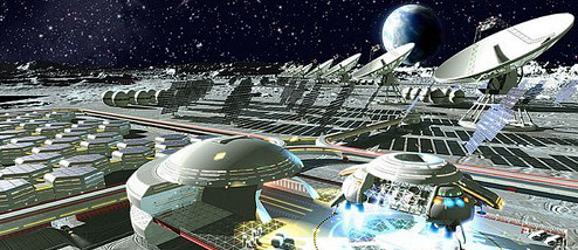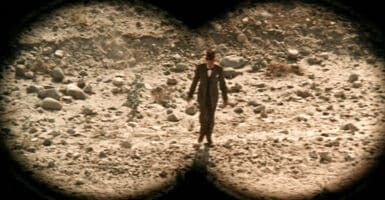Lunar Super Computer Could Be A Huge Help To NASA’s Space Missions
This article is more than 2 years old

Created in 1958, NASA’s Deep Space Network (DSN) has been a huge part of robotic missions outside of Earth’s orbit. The collection of antennas and communication facilities from Spain, Australia, and the US has the important responsibility of tracking robotic spacecraft beyond Earth’s orbit and has even been used to track important craft closer to home, like the Apollo missions. As important as the DSN is, though, it’s starting to show its age as space traffic seems to be growing rapidly. Now an engineer has put forth an idea that might take the load off of the current DSN while expanding its capacity. And the best part is, it provides a really good reason for going back to the moon.
In a presentation to the AIAA Space Conference last week, Ouliang Chang, from USC, presented a plan to bring the DSN into the modern age, not by upgrading the existing network, but by installing a supercomputer on the moon. According to New Scientist, Chang believes that by putting a supercomputer and some accompanying dishes in a crater near the poles of the moon’s far side, it would be able to tap into lunar ice for cooling. The lunar supercomputer would not only drastically reduce traffic on the current DSN, but it could also provide computational power for the first lunar base and even be used in conjunction with the current network to perform long-baseline interferometry, and combine multiple radio telescopes into one large telescope. With such a complicated and important piece of machinery in place on the surface of the moon, it seems like a no-brainer that a lunar base would soon follow in order to at least maintain and upgrade the equipment if for no other reason.
While the dream of a lunar base has been around since before we even launched men out of the atmosphere, it is only in the past 20 years or so that the idea has come under serious fire inside the space community. Many space enthusiasts (including some very famous astronauts from the Apollo program), who still look at America’s space program as a race to be first, have dismissed a return to the moon as a step backwards. Others, with the mindset that a slow but continual expansion of mankind throughout the solar system will give humans a permanent foothold in space through colonization, have always thought a moon base is the next logical step. The idea that Chang puts forward seems to finally be the perfect compromise between both, giving a concrete reason to colonize the moon while supporting the infrastructure that will be needed to track and communicate with a Mars mission.
This seems like a great idea that would finally put to rest one of the biggest schisms in the space community once and for all. I hope NASA was listening.












